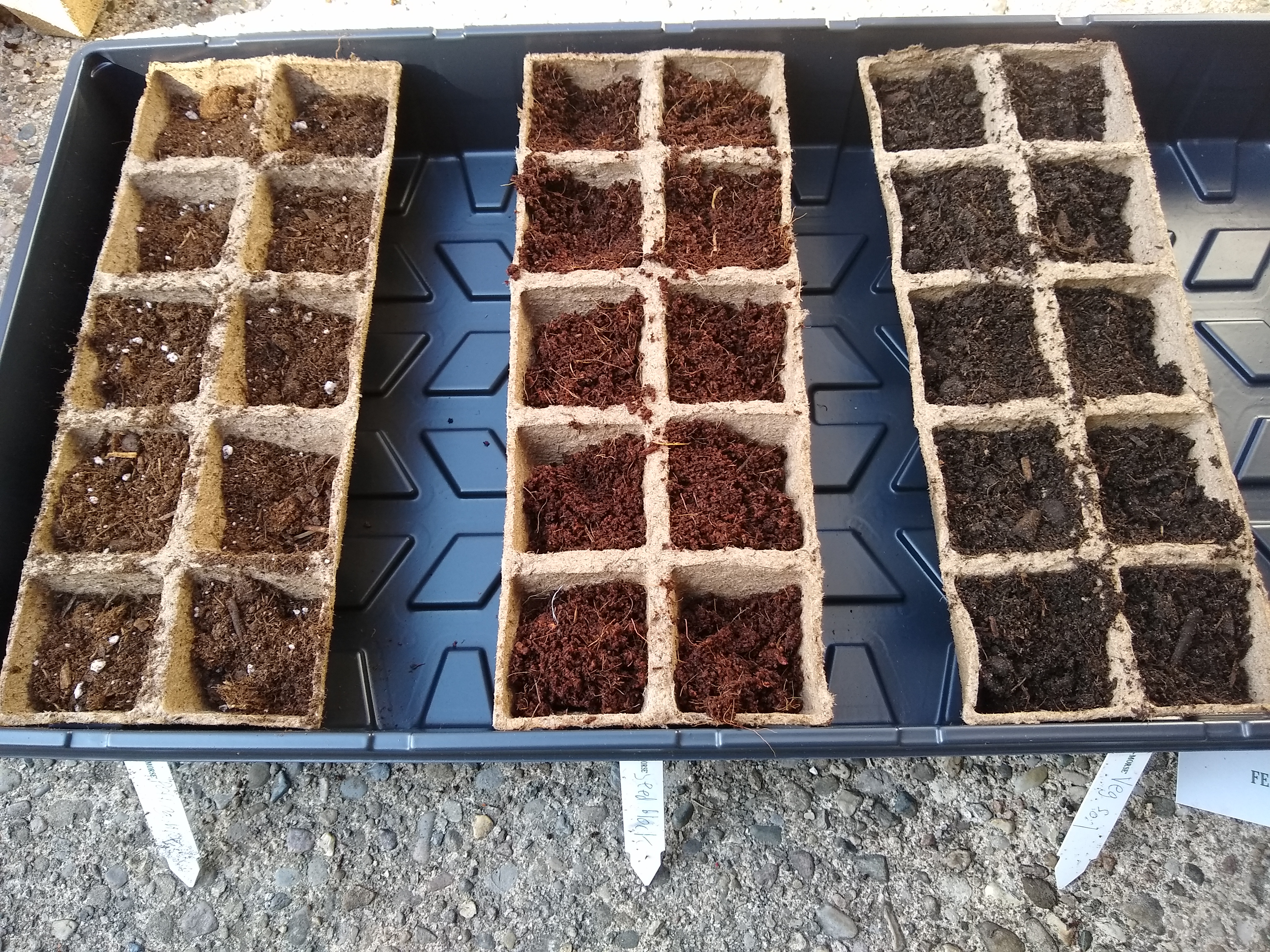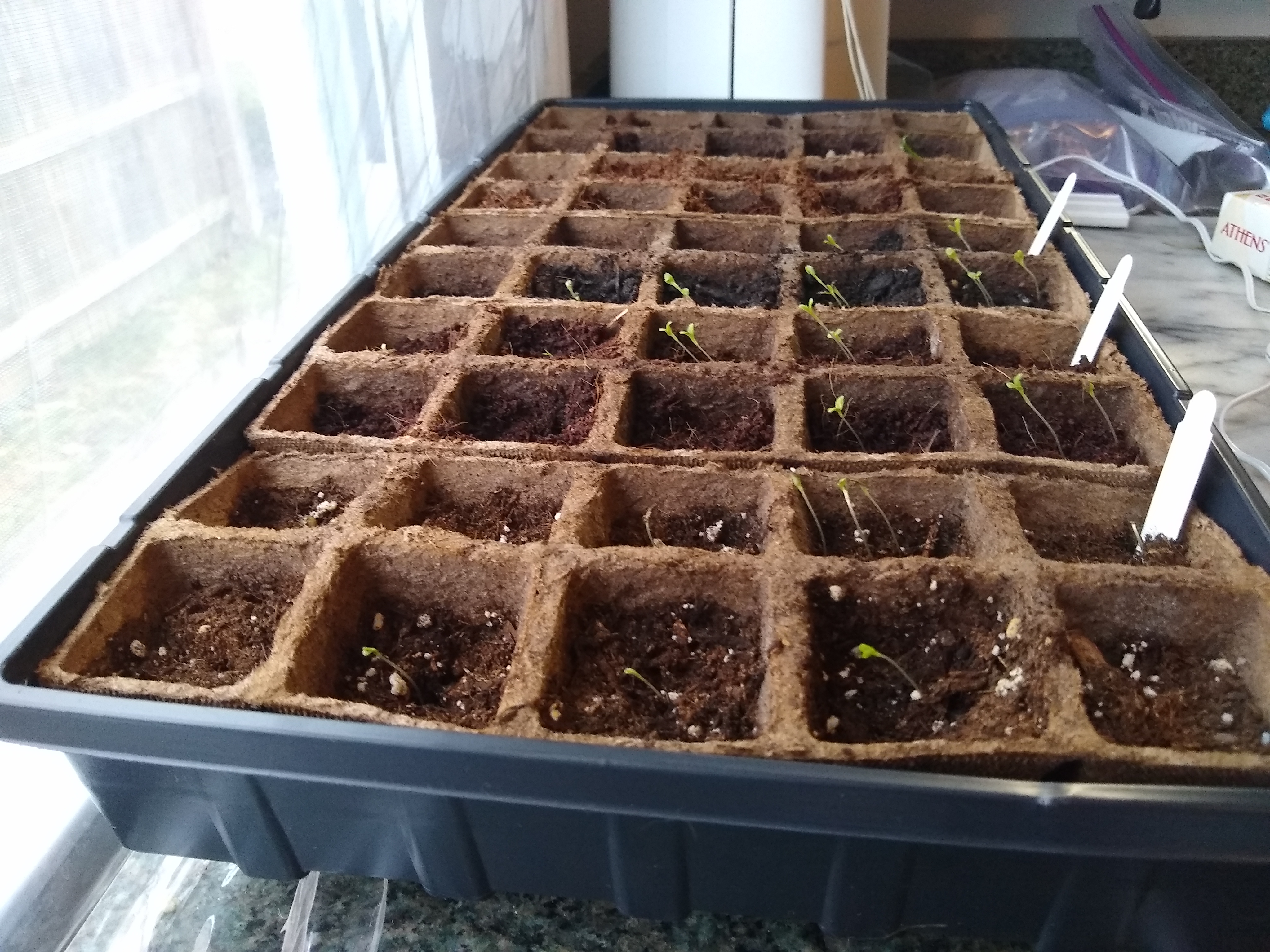Getting youth involved in growing vegetables from seed
Ideas for learning about how germination is affected by growing conditions.

Why start vegetables indoors?
Growing plants from seeds indoors provides a head start on planting and in a well-managed environment can reduce the risk of seed loss to cold temperatures, wildlife or inconsistent moisture. Starting vegetables indoors protects warm season plants such as peppers, tomatoes or okra that are susceptible to frost and can give them a head start on the season. Starting seeds is easy with potting trays, although alternative materials including egg containers are suitable too. Mid to late spring is an ideal time to begin sowing seedlings indoors, as the final frost dates in Michigan arrive between May and June for most of the state. To determine the last frost in your Michigan community, review the frost-free dates table published by Michigan State University Extension. The back of the seed packet will also tell you how many weeks before the last frost you should sow that particular seed indoors.
If you visit a garden center in search of a soil for starting seeds, you will discover multiple options for soil from bags labeled for outdoor herbs and vegetables to potting mixes. It may not be clear which bag of soil is most appropriate. For example, if starting vegetables indoors and transplanting them to an outdoor garden, which type can be used? This is a wonderful opportunity to partake in a science experiment in your garden.
A test for how different soil media affect plant germination
Starting a garden is a chance to learn about plant characteristics, how plants grow and the development from seed to seedling. Growing plants from seed provides an up-close experience with germination, the process of seeds sprouting into seedlings.
This project is designed to help youth become familiar with the conditions necessary for plant growth. It is important to note this is not a replicated study, and results could vary based on growing conditions. Questions to explore when starting vegetables from seed include:
- How quickly do different vegetables germinate?
- How is the rate of germination affected by the type of light (sunlight by a window versus artificial light)?
- How does soil depth affect germination?
- Why does each potting medium have a different color?
- Which potting medium is best for seed starting indoors?
Supplies needed
- Potting medium
- Labels
- Tray or other container for starting seeds
- Water
- Sunny window or other light source
- Notebook for recording germination
- Seeds: peas, pumpkins, cucumbers and sunflowers are good choices for younger children. The seeds are larger and germinate quickly.
Regardless of which questions you ask, starting seeds indoors means supplying the correct conditions for seed germination. Each type of seed has preferred temperature and light conditions. Generally, you will need to provide 10 to 16 hours of bright light to hasten germination. With too little light, plants will be fragile and leggy. Seeds also need the correct soil temperature. Warm season vegetables germinate when the soil temperature are above 60 degrees Fahrenheit while cool season vegetables, like spinach, lettuce and peas, germinate at soil temperatures between 40 and 50 F.
It is best to place a single seed in each tray since too many seedlings planted in one area will cause them to emerge too close together (Photo 1). Working with children requires some flexibility. If the younger members of your household apply more than a single seed in each tray or container, separate or thin seedlings before transplanting. Without thinning, poor air circulation provides ideal conditions for disease.
After placing seeds in soil trays or containers, water until the soil surface is wet and shows signs of drainage. Be careful to maintain a consistent level of moisture. Drought can quickly damage tender seedlings. Overwatering creates an environment susceptible to mold or fungus, which stops germinating or kill young seedlings in a disease called damping off. If the soil remains wet into the second day, you may need to water every other day instead of daily. Only water when the soil surface appears dry. If children are not sure whether the plants need to be watered, encourage them to touch the soil and feel how moist it is.

In this project, I worked with two children to evaluate germination of the lettuce variety ‘Black Seeded Simpson’ between three different growing media: potting medium, a seed-starting brick that grows with water, and outdoor garden and herb medium (Photo 2). After the third day, lettuce seeds germinated in each of three soil types (Table 1). A similar number of seedlings emerged from each soil type after six days.
As seedlings grow, have children make note of their observations in a notebook. We observed our seedlings growing in the direction of the light source (Photo 3). This growth response is called phototropism. This may indicate that plants need supplemental light. Shop lights or bright lamps can supply additional light. To see how plant growth patterns can change, try turning the seed tray in the opposite direction after plants orient themselves the light.

How to keep vegetables growing after a germination experiment?
If plants remain healthy after germination, the next step is to identify a place that receives 8 or more hours of outdoor sunlight. MSU Extension has detailed guides on how to harden and transplant vegetables outside, which will increase the success of seedlings surviving once moved to the outdoors.
For more resources on germination, see Seed and Seedling Biology from PennState Extension.
|
Table 1. Number of lettuce seedlings that germinated in each potting medium. | |||
|---|---|---|---|
|
Date from planting |
Potting mix |
Seed starting mix |
Vegetable soil |
|
3 |
3 |
8 |
7 |
|
4 |
10 |
10 |
14 |
|
5 |
10 |
10 |
14 |
|
6 |
10 |
10 |
15 |



 Print
Print Email
Email